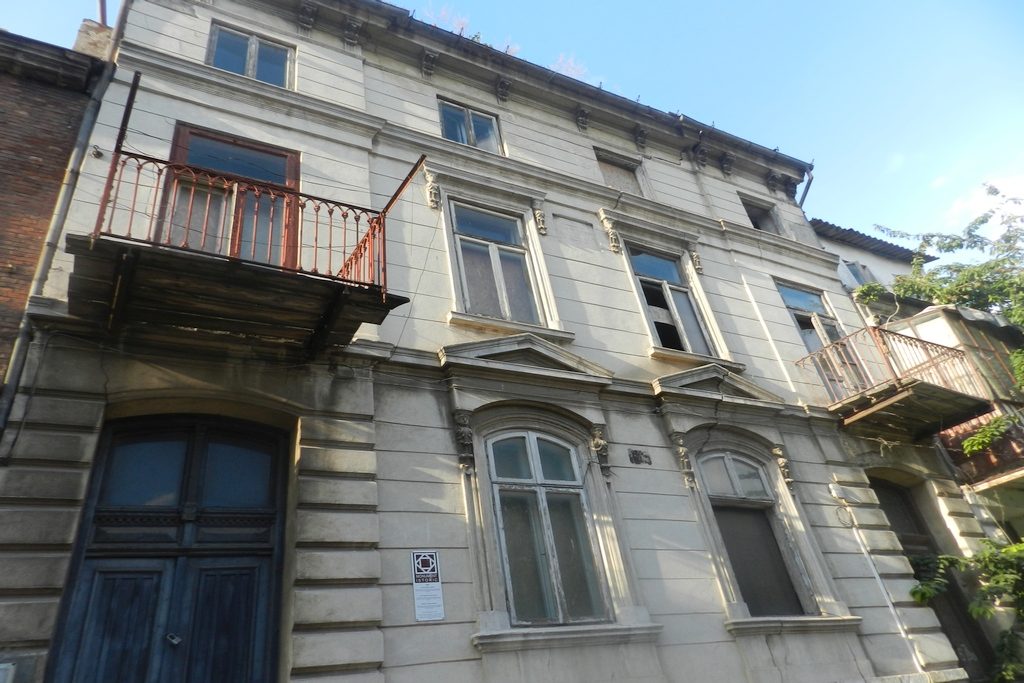

It was built by the Greek painter Theodor Russo, at the end of XIX century.
The building’s architecture is influenced by neoclassical style of the architect Pelopidas Couppa.
Neo-Classicism is a movement in fine arts, the architecture and decorative arts of Europe and North America in the eighteenth and nineteenth centuries, is characterised by classical Greek and Roman revival style. Among the leading representatives of the movement there are the architects Claude-Nicholas Ledoux and Robert Adam, the painters Jacques-Louis David, Jean Ingres and Anton Mengs, the sculptors Antonio Canova, John Flaxman, Bertel Thorvaldsen and Johann Sergel as well as the designers Josiah Wedgwood, George Hepplewhite and Thomas Sheraton.
Influenced by the thinking of the Enlightenment, the Neo-Classicism requires the rigor domination, with the Greek and Roman art as models. The antiquity emerges once again in opposition to baroque concepts. This „new lecture” aimed to lead to simplicity and depth of nature, rediscovering unlike the superficial emotions of Rococo. Mythological and ancient themes, are again present. During the first Empire (1804-1814), the Neo-Classicism became the official style.
Built on four levels, the building has a basement and an attic both of them highest. The pedestal was made of medieval stone extraction. The entry doors are wooden and neoclassical decorated with denticulate and capital, a place where the monogram “TR” is inscrived. Thus, the initial owner’s name is identified, the Greek Theodor Russo, and the year of construction, 1897.
The building is distinguished by its vertical symmetry, accentuated by means of windows. Each window of the ground floor has one gable with an acroteria (the pedestal lies on a gable to sustain the statues, ships or other ornaments) supported by caryatides, in its upper part.
Above them there are windows with architrave (a construction element – typical for classical architecture – which constituting the bottom of entablature and which relies on column’s capital or on the wall) supported by consoles- cariatydes, from the same typological series.
Above the entrance doors, two balconies are noted with a simple fittings supported from the side. A cornice supported by consoles with is highlighted with with volute and a narrow frieze with leaves. Upstairs, between windows it can be identified a hard legible inscription in Greek.
